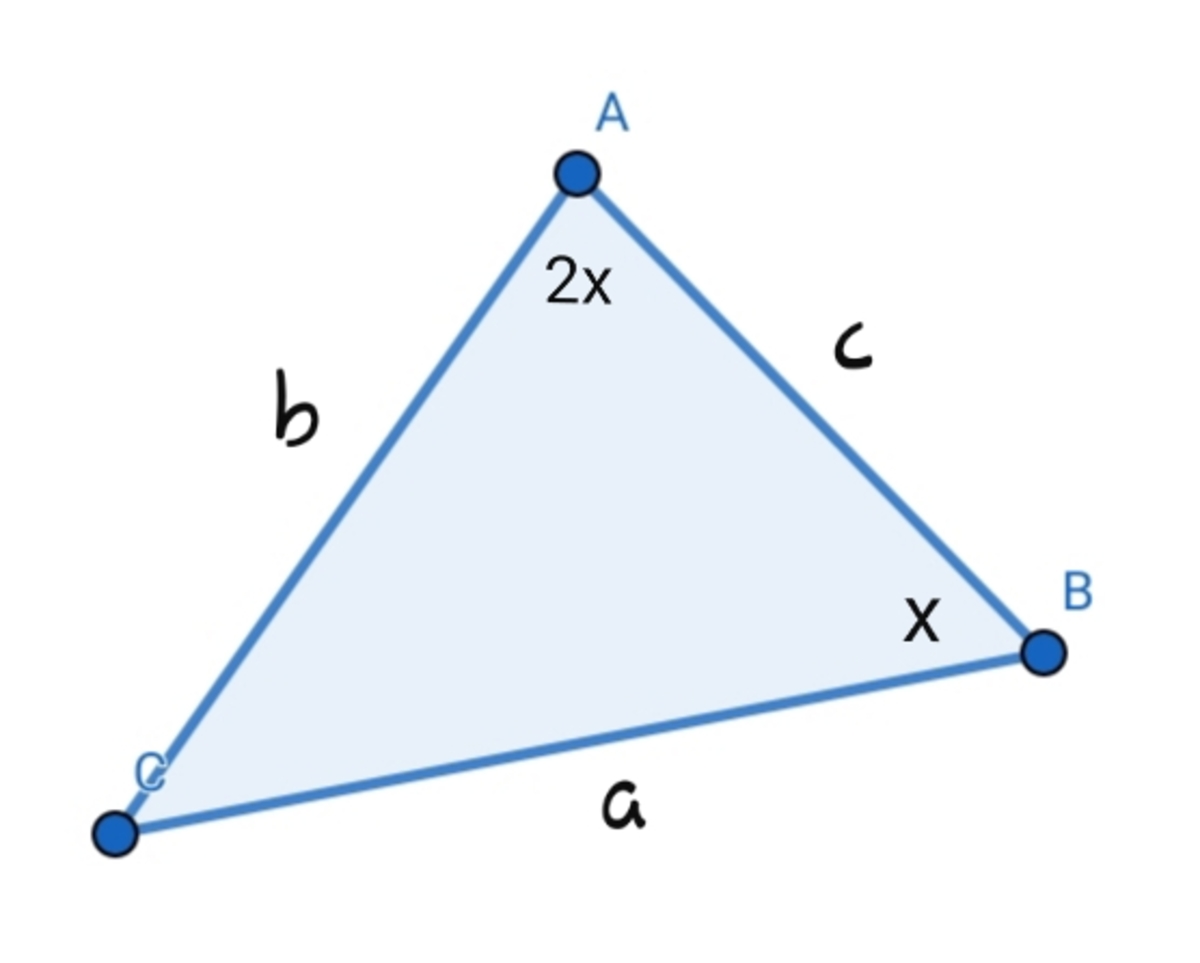Cool Geometry
In △ A B C , ∠ A = 2 ∠ B . What is the value of B C 2 ?
This section requires Javascript.
You are seeing this because something didn't load right. We suggest you, (a) try
refreshing the page, (b) enabling javascript if it is disabled on your browser and,
finally, (c)
loading the
non-javascript version of this page
. We're sorry about the hassle.
2 solutions
It's an rmo problem
How is AB = AD?
You can use a combination of the law of cosines and law of sines.
Let the length of AB = c, the length of BC = a, the length of AC = b, the measure of angle B be x, and the measure of angle A be 2x.
By the Law of Sines,
sin(A)/sin(B) = sin(2x)/sinx = 2 cosx = a/b
We get:
2cosx = a/b (equation 1)
However, the Law of Cosines states that
cos(B)
= cos x
= (a^2 + c^2 - b^2)/2ac
Substituting this into equation 1, we get the equation
(a^2 + c^2 - b^2)/ac = a/b
(a^2)b + (c^2)b - b^3 = (a^2)c
(a^2)b - (a^2)c = b^3 - (c^2)b
(a^2)(b-c) = b(b^2 - c^2) = b (b+c)(b-c)
(a^2 - b(b+c))(b-c) = 0
So it's either a^2 = b(b+c) (or BC^2 = AC(AC+AB)) or b - c = 0
If b - c = 0, or b = c, then we get that the triangle would be a 45-45-90 triangle, with AC and BC as the legs (using the Law of Sines). Using the Pythagorean theorem, we arrive at BC^2 = AC^2 + AB^2 = AC(AC+AB) (since AB = AC).
Thus, BC^2 = AC(AC+AB)
In latex:

From Cosine rule, b 2 = a 2 + c 2 − 2 a c cos x cos x = 2 a c a 2 + c 2 − b 2
Using Sine rule, sin 2 x a = sin x b b a = sin x sin 2 x b a = 2 cos x b a = 2 ( 2 a c a 2 + c 2 − b 2 ) a 2 c = a 2 b + c 2 b − b 3 a 2 c − a 2 b = c 2 b − b 3 a 2 ( c − b ) = b ( c 2 − b 2 ) a 2 = b ( c + b ) Or, c − b = 0 that makes the triangle isosceles and right angled, satisfying the required conditions.
Extend C A to D Such that ∠ C B D = ∠ C A B
△ C B A is similar to △ C D B
C D C B = C B C A
So,
B C 2 = C D ⋅ C A
Also,
A B = A D ..........................Isoceles triangle theorem in △ B A D
So,
B C 2 = A C ( A C + A B )